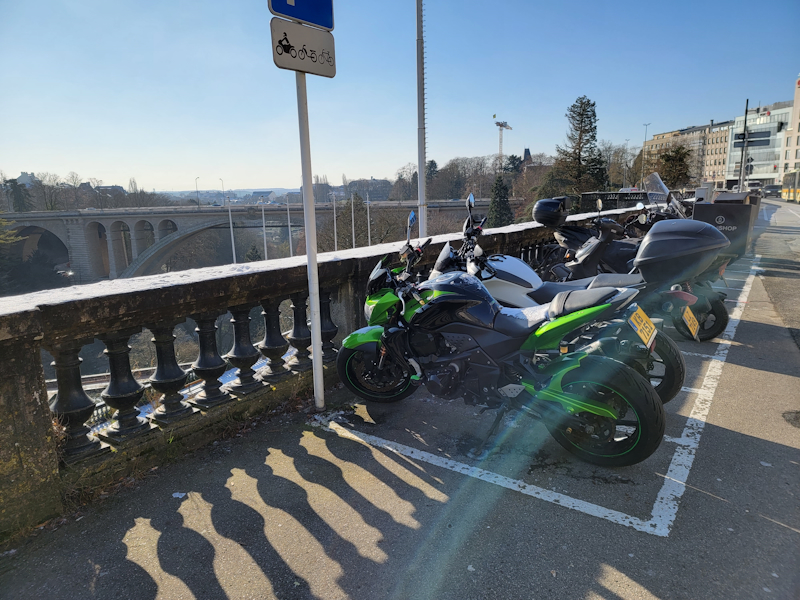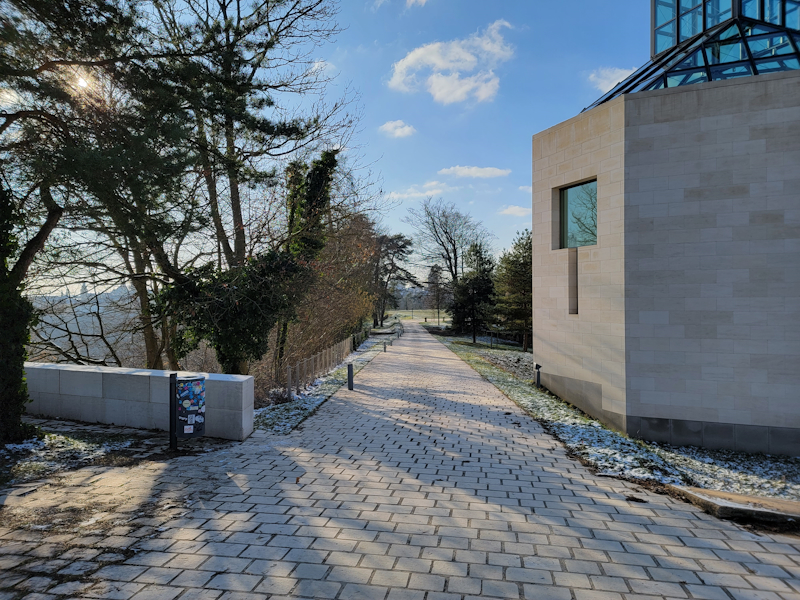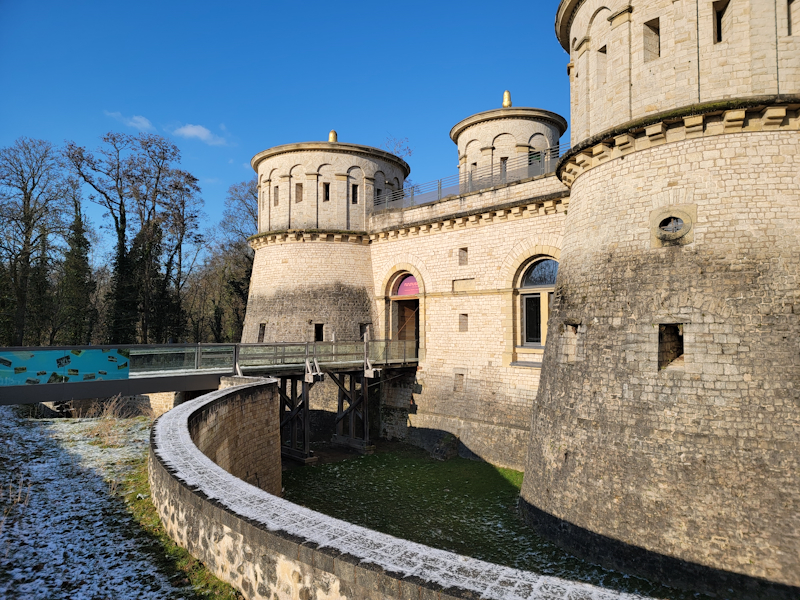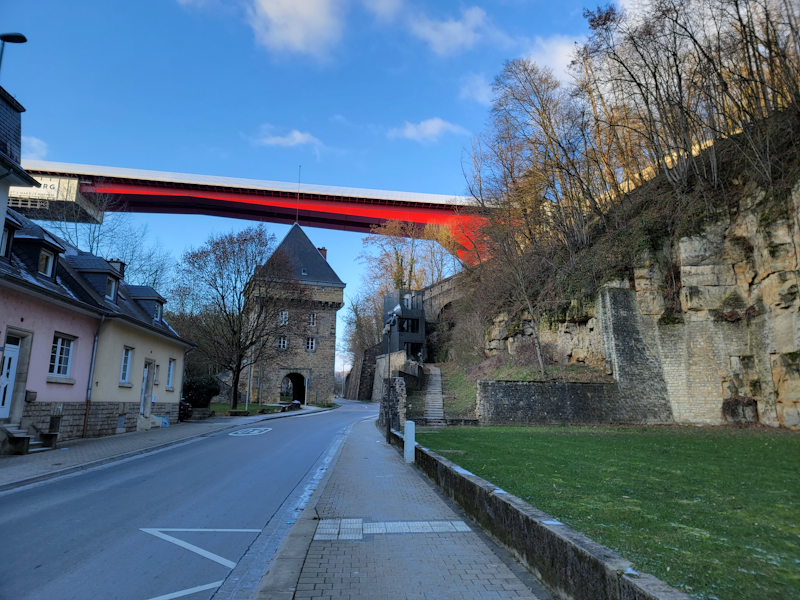The Samsung Galaxy S21 Ultra & S21 Review: The Near Perfect and The Different
by Andrei Frumusanu on February 22, 2021 12:00 PM EST- Posted in
- Smartphones
- Samsung
- Mobile
- Galaxy S21
- Galaxy S21 Ultra
Camera - HDR
We swivel to the main sensor capture experience and quality. Luckily, I was able to get captures on a very sunny day to really stress the HDR processing the cameras, which isn’t always straightforward to do on winter days.

[ S21U(S) ] [ S21U(E) ]
[ S21(E) ] [ S20+(E) ] [ Note20U(S) ]
[ iPhone 12 Pro ] [ Mate40 Pro ] [ Mi 11 ]
[ Mi 10 Pro ] [ Pixel 5 ]
[ X-T30 ( ) ]
In the first shot what’s quite obvious is the lens flare that affects most of the phone cameras in this scene. Unfortunately, anti-reflective coatings aren’t something that are very prevalent in the mobile smartphone camera industry so it’s something you probably won’t see a lot of vendors put much effort in.
Disregarding that, the new S21 phones are all doing extremely well, and generally being able to outperform all other phones in terms of the dynamic range they’re able to capture, which sees a slight improvement to the Note20 Ultra.
There are processing differences between the Exynos and Snapdragon, particularly visible on the ultra-wide angle module, with much better retention of shadow detail on the part of the Snapdragon unit.

[ S21U(S) ] [ S21U(E) ]
[ S21(E) ] [ S20+(E) ] [ Note20U(S) ]
[ iPhone 12 Pro ] [ Mate40 Pro ] [ Mi 11 ]
[ Mi 10 Pro ] [ Pixel 5 ]
[ X-T30 ( ) ]
This shot is also very demanding as shooting against the sun isn’t your recommended capture style.
Although the S21 phones are doing very well, I would say they’re falling more notably behind the iPhone 12’s processing which is able to get much more dynamic range out of the shot.

[ S21U(S) ] [ S21U(E) ]
[ S21(E) ] [ S20+(E) ][ Note20U(S) ]
[ Mate40 Pro ] [ Mi 11 ]
[ Mi 10 Pro ] [ Pixel 5 ]
[ X-T30 ( ) ]
Here, I thought the S21 phones fell flat with their HDR. The S20 and Note20Ultra more accurately retained the highlights of the scene while the S21 and S21 Ultra’s pictures histograms looks empty in the last 10-15% of levels, even though this is in the broad sun.

[ S21U(S) ] [ S21U(E) ]
[ S21(E) ] [ S20+(E) ] [ Note20U(S) ]
[ iPhone 12 Pro ] [ Mate40 Pro ] [ Mi 11 ]
[ Mi 10 Pro ] [ Pixel 5 ]
[ X-T30 ( ) ]
For once not facing the sun, we’re seeing different characteristics between the phones. The S21 Ultra compared to the Note20 Ultra is able to showcase much better fine details both in highlights as well as the shadows. Oddly enough, while the bright areas are generally the same for the Exynos model, it suffers a lot in the shadows and blacks.

[ S21U(S) ] [ S21U(E) ]
[ S21(E) ] [ S20+(E) ] [ Note20U(S) ]
[ iPhone 12 Pro ] [ Mate40 Pro ] [ Mi 11 ]
[ Mi 10 Pro ] [ Pixel 5 ]
[ X-T30 ( ) ]
The tendency of the Exynos doing worse in the shadows continues on in this scene. It’s to be noted that all the phones here had trouble with colour temperature which was far too warm, though the S21 improved upon the S20.

[ S21U(S) ] [ S21U(E) ]
[ S21(E) ] [ S20+(E) ] [ Note20U(S) ]
[ iPhone 12 Pro ] [ Mate40 Pro ] [ Mi 11 ]
[ Mi 10 Pro ] [ Pixel 5 ]
[ X-T30 ( ) ]
This scene was interesting as the Snapdragon and Exynos did very different approaches in terms of capture although both came to a very similar result. The Exynos’s exposure was half of that of the snapdragon, and allowed it to retain highlight details in the clouds, although the Snapdragon’s lower ISO capture allowed it for more details in the shadows.

[ S21U(S) ] [ S21U(E) ]
[ S21(E) ] [ S20+(E) ] [ Note20U(S) ]
[ iPhone 12 Pro ] [ Mate40 Pro ] [ Mi 11 ]
[ Mi 10 Pro ] [ Pixel 5 ]
[ X-T30 ( ) ]
In more high dynamic range scenes, the S21 phones again do extremely well against the competition, although the generational differences are rather small. Again, we see very large differences in the blacks between the Snapdragon and Exynos phones in this scene when you look at the UWA image and the car on the right.

[ S21U(S) ] [ S21U(E) ]
[ S21(E) ] [ S20+(E) ] [ Note20U(S) ]
[ iPhone 12 Pro ] [ Mate40 Pro ] [ Mi 11 ]
[ Mi 10 Pro ] [ Pixel 5 ]
[ X-T30 ( ) ]
In less demanding shots like this one, the differences between the phones are much more minor in terms of exposure, but we are seeing large colour and detail variations. I have no idea what happened to the Snapdragon S21U as the grass on the right looks horrible compared to the Exynos S21U, which in turn looks worse than the Note20 Ultra, which is by far the most accurate phone in this scene.
HDR Daylight Verdict: Generally good, but extremely inconsistent
Generally, my view of the S21’s daylight performances are very much typical of a fresh Samsung device: a very much inconsistent processing mess. The S21 Ultra has extremely capable hardware, but the problem is that as with every last Galaxy S launch over the last few years we’re seeing very odd processing results. Sometimes the phone can capture great shots with dynamic range and detail far better than any other device, and sometimes it falls flat on its face. The fact that the Note20 Ultra is able to often beat out the new S21 Ultras in picture quality means that this is solely a software issue, and the firmware of the new phones just isn’t mature enough.
Since getting the phones and capturing the image samples on the day-1 firmware update, I’ve since gotten 2 further updates on the Exynos and one on the Snapdragon model, both always stating improved camera quality and improvements, which I would very well believe to be accurate and change the results showcased here. After all, Samsung on the S10 and S20 has released camera updates months into a device’s lifecycle, and I wouldn’t be surprised for the same to happen to the S21.
Generally speaking, the results of the S21 series are both good and bad because of this. There are hints of superb image quality, marred with general inconsistencies. The issues are more prevalent for the Ultra phones than for the simpler baseline models. I feel like Samsung has a swiss army knife here in terms of a camera solution, but all the knives and tools are dull.










122 Comments
View All Comments
Andrei Frumusanu - Monday, February 22, 2021 - link
It's not, the software rendering part is extremely minor and has never had any significant impact on battery life.snowdrop - Monday, February 22, 2021 - link
So s21/s21+ > s21u for camera experience and s888 > e2100 for image quality. This strongly implies that the s21/s21+ with s888 would offer the best overall camera implementation of all the variants, but unfortunately this combination isn't featured in the article.Any hope of adding some shots from a s21/s21+ with s888 to the comparison?
Andrei Frumusanu - Monday, February 22, 2021 - link
The SD888 isn't definitive in having the better image quality.And no, I'm in Europe so getting Snapdragon Galaxies is hard, I have no plans to further attempt anything beyond the S21U.
snowdrop - Tuesday, February 23, 2021 - link
To me the s888 ultra shots all looked notably better (sharper, better shadow / mid / highlight detail, improved lens correction) with the occasional exception of better highlight detail when the e2100 chose a darker exposure and the one shot where the s21u s888 wasn't in focus. The grass / foliage processing on the e2100 is particularly terrible so it could just be that the scenes you chose exaggerated the e2100's weak spots.It looks like samsung used the stock qualcomm image processing stack for s888 models and is testing beta internal software on the e2100 ones.
I enjoy your excellent commentary on the computational photography capabilities of phone camera systems in your phone reviews. Have you considered including supplementary commentary from someone who has done dslr / lens reviews though to add a more photographer centric perspective though?
s.yu - Wednesday, February 24, 2021 - link
Uh pretty much from the first sample the Exynos was doing better, far better texture, though the SD caught up in a few subsequent samples, so this generation I say the processing is too close to call. Generally the SD variants had a better track record though.JoeDuarte - Monday, February 22, 2021 - link
Can anyone confirm whether the S21 with the Snapdragon has dual frequency GPS? Sorry if I missed it in the article. Dual frequency GPS is supposed to yield a huge accuracy boost, and maybe time to positioning too.JoeDuarte - Monday, February 22, 2021 - link
All the benchmark graphs are missing the S21, but Andrei is talking as though they include the S21. The graphs only show variations of the S21 Ultra, not the regular S21. Can we get the S21 results included?JoeDuarte - Monday, February 22, 2021 - link
Does Arm plan to succeed the A55 low power cores with a credible upgrade? Experts here have talked about this before, how the A55 is hopelessly outclassed by several generations of Apple low power counterparts at this point. Why have they iterated the A7x cores but not the A5x?Does anyone have insight into why Samsung's SoCs are so bad? It doesn't make sense for a company that owns the fabs, gets to develop the process nodes, and design the SoCs to be so far behind, spanning maybe a decade now. Is there no advantage, no synergies or co-optimization opportunities, in such complete vertical integration? It's supposed to be an advantage for Apple to design its own SoCs and cores. Why is it not an advantage for Samsung to do that and to*also* have the fabs and node development? Is there a talent issue? I wonder if maybe there just aren't enough engineers operating at the necessary level of skill to populate all these companies. The actual human cognitive science of how these teams do what they do is a black box, and apparently TSMC and Apple are able to do things that Samsung, Intel, and GF are not, and the difference is surprising.
nandnandnand - Thursday, February 25, 2021 - link
I think the Cortex-R82 points to further improvements to the efficiency cores being possible. Or Apple's own take on efficiency cores.Maybe we'll find out about an A55 successor within the next few months, before TSMC 3nm kicks off.
nandnandnand - Thursday, February 25, 2021 - link
Also, I think the "Helios" Neoverse E1 is better than A55, even discounting its SMT capability.